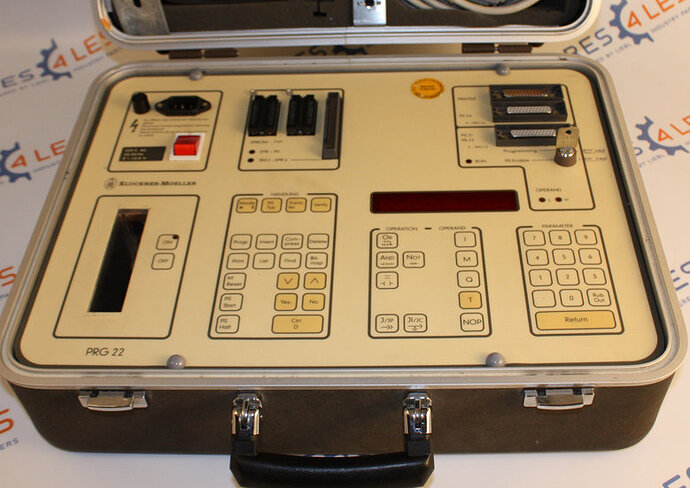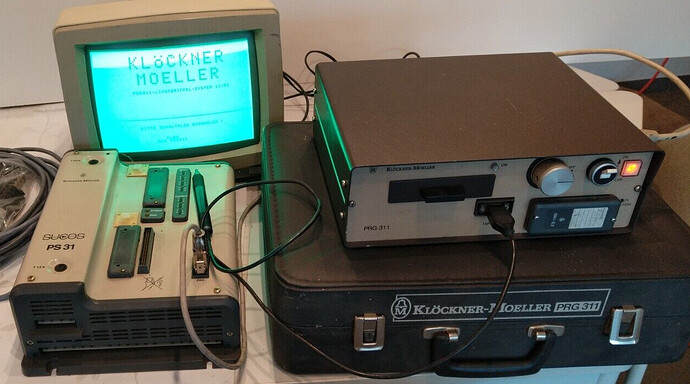The German PLC from Klöckner Moeller (now Eaton) PS3 and Sucosoft S30 (v2 1986 DOS) is already vintage. On ebay I found an earlier one. PS24 series (~1979). PS stands for Programmierbare Steuerung (programmable controller) PS24 and PS22 are racks. PS21 (~1983?) and similar PS31 are “small” and thick. First the programmer
Programmed via a PC (DOS, Sucosoft S20), terminal VT 5700 and by different programming devices KSR43, TAS248, PRG 22 (suitcase above, membrane keyboard) or by PRG 311 via lightpen (D-sub DE-9). (The PS3 with PRG 300 also supports lightpen for drawing ladder logic.)
There’s also PRG 24S, a portable computer with CRT and 2x cassette drives (Sucosoft 1 system software loaded via cassette). I like these heavy suitcases. The PRG 22 (membrane keyboard) was especially for the PS21.
PLC and light pen programmer 311 (attached EEPROM is dark gray, the silver dial showing up to 45 minutes battery capacity)

VT5700 (Informatik Museum @mprove photography)
I haven’t found any manuals online, so I bought a book. I still have to read it completely. The CPU is not mentioned. The CPU card for the racks is called EBE 230. One other card has a 6810 RAM. I think the bus is 16 bits wide. An EPROM can store 4096 instructions (words).
Obviously just 5 instructions (OR, AND, NOT, =, jump conditionally, jump unconditionally).
And 5 operands (input, marker, output, timer, NOP). The programming device printing out some tokens/escape codes.
I have to study more and also compare that with the S30 software and manuals. I haven’t found the S20 software. An instruction list looking like this
0000 O I 0
0001 A I 1
0002 AN M 4
0003 = Q 2

